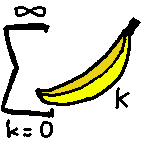| Mode | Name | Size | |
|---|---|---|---|
| -rw-r--r-- | CMakeLists.txt | 265 | logplain |
| -rw-r--r-- | c_content.cpp | 33890 | logplain |
| -rw-r--r-- | c_content.h | 6943 | logplain |
| -rw-r--r-- | c_converter.cpp | 9591 | logplain |
| -rw-r--r-- | c_converter.h | 5129 | logplain |
| -rw-r--r-- | c_internal.cpp | 3874 | logplain |
| -rw-r--r-- | c_internal.h | 3073 | logplain |
| -rw-r--r-- | c_types.cpp | 1036 | logplain |
| -rw-r--r-- | c_types.h | 1413 | logplain |
 |
index : minetest.git | |
| modified minetest for gpcfs purposes | gpcf |
| aboutsummaryrefslogtreecommitdiff |